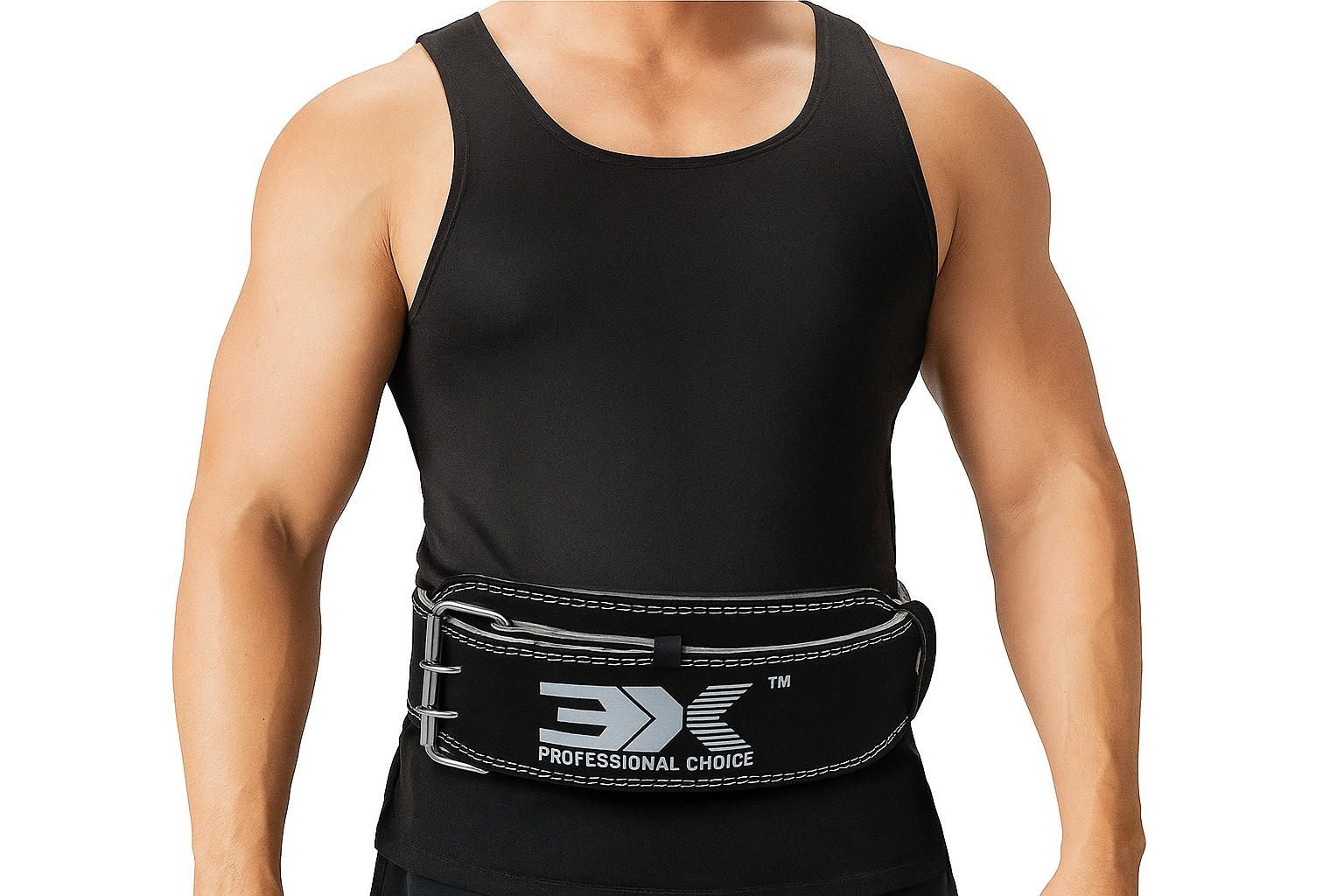Introduction to Weightlifting Belts
In the world of strength training and powerlifting, few accessories spark as much debate as the weightlifting belts. Some athletes swear by it, while others consider it unnecessary. But the truth lies somewhere in between: when used correctly, a belt can be a powerful tool for performance and safety. This article explains how and why to wear a weightlifting belt, when to use one, and what benefits it brings to your training.
What Is a Weightlifting Belt?
A weightlifting belt is a thick, durable belt worn around the torso to support the lower back and core during heavy lifts. Unlike a fashion accessory, it’s designed to create stability, improve posture, and help lifters generate more strength.
History and Evolution of Weightlifting Belts
Weightlifting belts have been used for decades, particularly in Olympic lifting and powerlifting. Early versions were made of leather and offered minimal adjustability. Today, lifters can choose from a variety of materials and designs tailored to different lifting styles and comfort preferences.
Types of Weightlifting Belts
- Leather Belts – Most popular among powerlifters for maximum support.
- Nylon Belts – Lightweight, flexible, often preferred in CrossFit and functional training.
- Lever Belts – Quick to adjust, ideal for competitive lifting.
- Prong Belts – Classic buckle design, secure but slower to tighten.
Why Use a Weightlifting Belt?
More than just a piece of equipment for the gym, a weightlifting belt can help you perform better and avoid injuries. Why lifters wear one is as follows:
Increasing the Pressure Inside the Abdomen
Intra-abdominal pressure (IAP) rises when you inhale deeply and hold your core against the belt. During big lifts, this pressure relieves strain on your spine by acting as an internal weight belt.
Lowering the Chance of Lower Back Injuries
The lower back is severely strained when lifting large objects. By distributing pressure more evenly, the belt reduces the chance of lumbar injuries.
Boosting Performance in Heavy Lifts
Research shows that lifters wearing belts can handle 5–15% more weight in squats and deadlifts compared to lifting beltless.
Improving Core Stability and Posture
Far from making your core “weaker,” a belt actually trains proper bracing mechanics and posture when used alongside core-strengthening exercises.
When to Wear a Weightlifting Belts
Not every exercise requires a belt. Knowing when to use it is crucial.
Heavy Compound Lifts
Belts are most useful during squats, deadlifts, overhead presses, and Olympic lifts—movements that challenge spinal stability.
Percentage of One-Rep Max (1RM)
Most lifters use a belt when working at 80% or more of their 1RM. Anything lighter usually doesn’t need belt support.
Strength vs. Hypertrophy Training
If your goal is muscle growth (hypertrophy), you may not need a belt for moderate weights. For maximal strength development, however, belts become essential.
How to Wear a Weightlifting Belt Correctly
A belt only works if worn properly. Here’s how to do it right:
Positioning the Belt on the Torso
- Place the belt across your lower abdomen and lower back.
- Place yourself beneath the rib cage and just above the hips.
Adjusting Belt Tightness
- Tight enough to provide resistance for bracing.
- Loose enough that you can still breathe and expand your core.
Breathing and Bracing Techniques
- Take a deep breath into your stomach.
- Expand your core against the belt.
- Hold the brace as you lift.
Common Mistakes to Avoid
- Wearing the belt too high or too low.
- Over-tightening, which restricts breathing.
- Using it for every set, even warm-ups.
Pros and Cons of Wearing a Weightlifting Belt
Benefits
- Increased strength output.
- Reduced risk of back injury.
- Improved bracing mechanics.
Potential Downsides
- Over-reliance may limit core development.
- Not necessary for light or isolation exercises.
- Misuse can cause more harm than good.
Choosing the Right Weightlifting Belt
Thickness and Width
- Powerlifting belts: 10–13mm thick, uniform width.
- Olympic belts: slightly tapered for mobility.
Material
- Leather: Maximum rigidity and durability.
- Nylon: Lightweight, versatile, comfortable.
Closure Type
- Lever: Quick adjustments, best for competitions.
- Prong: Reliable but slower to secure.
- Velcro: Convenient, less durable for max lifts.
FAQs About Weightlifting Belts
1. Do beginners need a weightlifting belt?
Not usually. Beginners should focus on building natural core strength before relying on a belt.
2. Will wearing a belt make my core weak?
No. A belt supports bracing but doesn’t replace core training.
3. Should I wear a belt for bench press?
Rarely. The belt is most effective in squat and deadlift variations.
4. Can I wear a belt all the time?
No. Overuse reduces its effectiveness. Save it for heavy sets.
5. What’s better: leather or nylon belts?
While nylon belts are more flexible and lighter, leather belts provide the most support.
6. How tight should my belt be?
Tight enough to brace against, but not so tight that breathing becomes impossible.
Conclusion: Should You Wear a Weightlifting Belt?
A weightlifting belt isn’t a magic solution, but it’s a valuable tool for serious lifters. If you’re lifting heavy weights at or above 80% of your max, a belt can help improve stability, protect your back, and boost performance. However, it shouldn’t replace smart training, proper form, or core strengthening.
If used wisely, the weightlifting belt can become your best ally in building strength safely and effectively.
For more detailed insights on strength training accessories, you can explore StrongLifts Training Resources.

